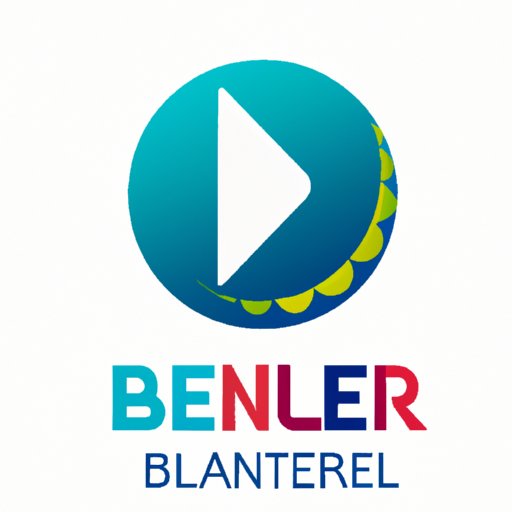
I. Introduction
Having a logo for your business is crucial for building a strong brand identity. A logo is the face of your business that customers will remember and associate with your products or services. In this article, we provide a step-by-step guide to creating a professional logo that is scalable and versatile across different media. We’ll also cover design principles, technical guidelines, and industry insights to help you make the most of your logo design.
II. Step-by-Step Guide
To design a logo for your business, you will need graphic design software and tools such as Adobe Illustrator or Canva. Here are the steps to follow:
- Begin with brainstorming ideas for your logo. Think about the message you want to convey and the emotions you want to evoke in your customers.
- Choose a color palette that resonates with your brand’s personality and message. Use no more than three colors to keep your logo simple yet effective.
- Select a font that complements your brand’s voice and personality. Consider the legibility of your font, especially when scaled down for smaller sizes.
- Decide on a logo style that best represents your brand, such as illustrative, minimalist, or abstract.
- Create a few rough sketches of your logo on paper before starting on the computer. This helps you visualize your ideas and give direction to your design.
- Using your preferred design software, start creating your design by following the sketches and ideas from the previous steps. Experiment with different shapes, fonts, and colors to enhance your design.
- Once you have a design you’re satisfied with, seek feedback from others to ensure your logo design resonates with your target audience.
- Save your logo in different formats, such as JPEG, PNG, and SVG, for use across different media and platforms.
Here are some tips to keep in mind while designing your logo:
- Keep it simple: A simple logo is easy to remember and recognize.
- Make it versatile: Ensure your logo works in different sizes and colors.
- Make it legible: Ensure your logo is readable, even at smaller sizes.
- Use vector graphics: Vector graphics allow you to scale your logo without losing quality.
III. Best Practices
There are some key design principles that are crucial to creating a professional logo for your business:
- Typography: Your font choice should be legible and reflect the personality of your brand. Avoid using more than two fonts to keep your logo simple and effective.
- Color palette: Your color choice should reflect your brand’s personality and differentiate you from competitors. Choose a maximum of three colors to keep your logo simple yet impactful.
- Logo design principles: The right logo design principles will ensure that your logo is cohesive and effective. These include balance, proportion, symmetry, and color theory.
These elements work together to create a logo that is both visually appealing and reflective of your brand’s identity. When designing a logo, it’s important to keep these principles in mind to create a logo that stands out and resonates with your target audience.
IV. Personal Experiences
Designing a logo can be a challenging yet rewarding experience. Here are some personal experiences and tips from designers who have gone through the process themselves:
“When I was designing my company logo, I found the process to be both frustrating and exhilarating. It required a lot of patience and persistence, but it was worth it in the end. My advice to other designers would be to not get too attached to any one idea and to seek feedback from others often. Partnering with a professional designer or branding agency can also provide valuable insights.”
V. Industry Insights
A logo should be reflective of the industry it represents. Here are some industry-specific visual elements that can enhance your logo:
- Fashion: Bold, elegant typography and monograms are favored in fashion logo design. Color palettes often include black and white, or metallics like gold and silver.
- Tech: Sleek, simple geometric shapes and sans-serif fonts are often used in tech logos. Blues, greens, and grays are popular color choices.
- Fitness: Strong, bold typography, and energetic colors like red and orange are popular in fitness logo design.
- Food and Beverage: Fun, playful typography and bright, bold colors are common in food and beverage logo design.
VI. Importance of a Good Logo
A well-designed logo can have a significant impact on your business:
- Brand identity: A good logo builds brand identity and helps your business stay top-of-mind with your target audience.
- Brand recognition: A good logo enhances brand recognition and makes it easier to identify your business in a crowded marketplace.
- Stand out: A good logo helps you stand out from competitors by differentiating your brand and message.
VII. Conclusion
In summary, creating a professional logo for your business can be achieved with careful consideration of design principles and industry-specific visual elements. Follow our step-by-step guide, incorporate best practices, and seek feedback when needed. With a well-designed logo, your brand will have an identity that resonates with your target audience and enhances recognition and loyalty in the marketplace.





